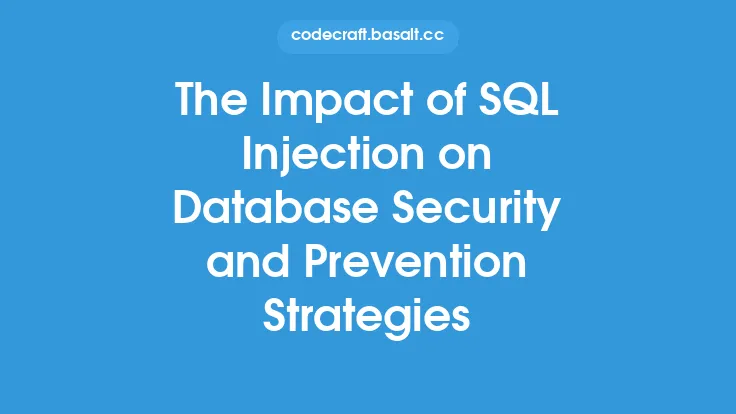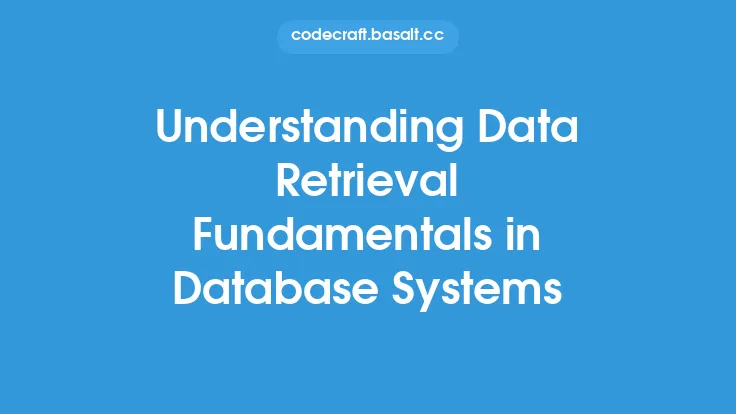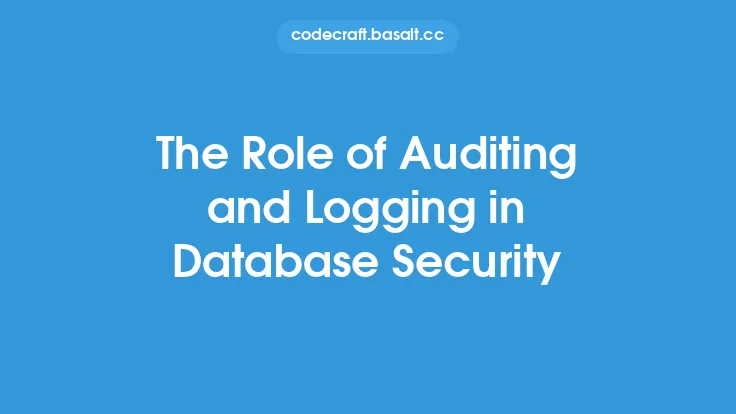Database security is a critical aspect of protecting an organization's data assets. It involves a set of policies, procedures, and technologies designed to safeguard databases from unauthorized access, use, disclosure, disruption, modification, or destruction. In today's digital age, databases are the lifeblood of most organizations, storing sensitive information such as customer data, financial records, and intellectual property. As such, it is essential to understand the fundamentals of database security to ensure the confidentiality, integrity, and availability of this critical data.
Introduction to Database Security Concepts
Database security concepts are built around the CIA triad, which stands for Confidentiality, Integrity, and Availability. Confidentiality refers to the protection of sensitive data from unauthorized access or disclosure. Integrity ensures that data is accurate, complete, and not modified without authorization. Availability guarantees that data is accessible and usable when needed. These concepts are the foundation of database security and are used to guide the development of security policies, procedures, and technologies.
Database Security Architecture
A database security architecture typically consists of multiple layers, each designed to provide a specific level of protection. The first layer is the network layer, which controls access to the database server. This layer includes firewalls, intrusion detection systems, and virtual private networks (VPNs). The next layer is the database server layer, which includes the database management system (DBMS) and its associated security features, such as authentication and access control. The database layer is responsible for storing and managing the data, while the application layer interacts with the database to perform various tasks. Each layer must be secured to prevent unauthorized access or malicious activity.
Database Security Threats
Database security threats can be categorized into two main types: internal and external. Internal threats come from authorized personnel who may intentionally or unintentionally compromise database security. Examples of internal threats include unauthorized data modification, data theft, and privilege abuse. External threats, on the other hand, come from outside the organization and include hacking, malware, and denial-of-service (DoS) attacks. Other threats, such as social engineering and physical attacks, can also compromise database security. Understanding these threats is essential to developing effective database security strategies.
Database Security Technologies
Several technologies are used to protect databases from security threats. One of the most common is encryption, which scrambles data to make it unreadable to unauthorized users. Access control technologies, such as authentication and authorization, ensure that only authorized users can access the database. Auditing and logging technologies track database activity, allowing security administrators to detect and respond to security incidents. Backup and recovery technologies ensure that data is available in the event of a disaster or data loss. Other technologies, such as intrusion detection and prevention systems, can also be used to enhance database security.
Database Security Standards and Regulations
Several standards and regulations govern database security, including the Payment Card Industry Data Security Standard (PCI DSS), the Health Insurance Portability and Accountability Act (HIPAA), and the General Data Protection Regulation (GDPR). These standards and regulations provide guidelines for securing sensitive data and protecting against security threats. Compliance with these standards and regulations is essential to avoiding fines, penalties, and reputational damage. Organizations must also develop their own database security policies and procedures to ensure the confidentiality, integrity, and availability of their data assets.
Database Security Best Practices
Several best practices can be used to enhance database security. One of the most important is to implement a defense-in-depth strategy, which involves using multiple layers of security to protect the database. Regular security audits and risk assessments can also help identify vulnerabilities and weaknesses. Database security administrators should also stay up-to-date with the latest security patches and updates, and ensure that all database users have the necessary training and awareness to protect against security threats. Other best practices, such as using secure protocols for data transmission and implementing a incident response plan, can also be used to enhance database security.
Conclusion
Database security is a critical aspect of protecting an organization's data assets. By understanding the fundamentals of database security, including the CIA triad, database security architecture, and database security threats, organizations can develop effective security strategies to protect their databases. Several technologies, standards, and regulations are available to enhance database security, and best practices such as defense-in-depth and regular security audits can also be used to protect against security threats. As the threat landscape continues to evolve, it is essential for organizations to stay vigilant and adapt their database security strategies to ensure the confidentiality, integrity, and availability of their critical data assets.





